













The magazine of the art-form of the photo-essay
“A free, really high quality photo-essay magazine. Fabulous!”
Stephen Fry. British actor, writer and film & documentary maker

April 2015 back issue



by Franck Vogel
Harsh and dry, with temperatures frequently topping 50°C, India’s Thar desert or “Land of the Dead” is the most
populous desert in the world. The secret of survival in this dry region lies in the people’s unusual lifestyle. The
Bishnois of Rajasthan give their lives to protecting trees and wildlife in their environment as their guru taught them to
do 500 years ago. Every form of life around them is considered to be a member of their family that deserves care and
affection: demoiselle cranes are sisters of their women, endangered black buck antelopes are their sons, oxen are
members of their family and Khejari trees, their holy men. In our world where environmental issues are always
pressing, Bishnoi age-old traditions can certainly teach us something.
Often called the “world’s first environmentalists”, they follow 29 principles laid out in 1485 by their guru Jambheshwar,
when he founded the Bishnoi sect after a severe drought. The name is derived from Bis (meaning 20) and Noi (9).
Several of these rules are dedicated to environmental protection and compassion for living beings. Indeed, each
family plants new trees every year, uses only dry wood for its needs, creates a water tank to collect rainwater and
donates part of its harvest to their “children” (black buck, gazelle, peacock, pigeon,…) in order to maintain balance in
the desert. Such is the dedication of these strict vegetarians that they nurse ill or injured animals. Bishnoi women are
known to breast-feed motherless fawns.
Almost every year a man dies whilst violently chasing a poacher or defending a beautiful black buck. As a result of the
Bishnois’ work, trees flourish and antelopes are free to graze fearlessly within their settlements in the desert.
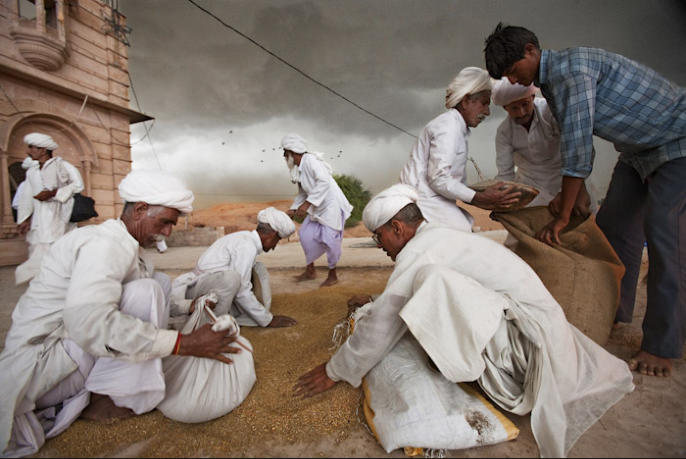
During their main festivals, each Bishnoi family has to offer wheat or millet in order to feed gazelles, black antelopes,
peacocks and pigeons living around the sacred temples. Since the 15th century they have shared their harvest as well
as water with wildlife.
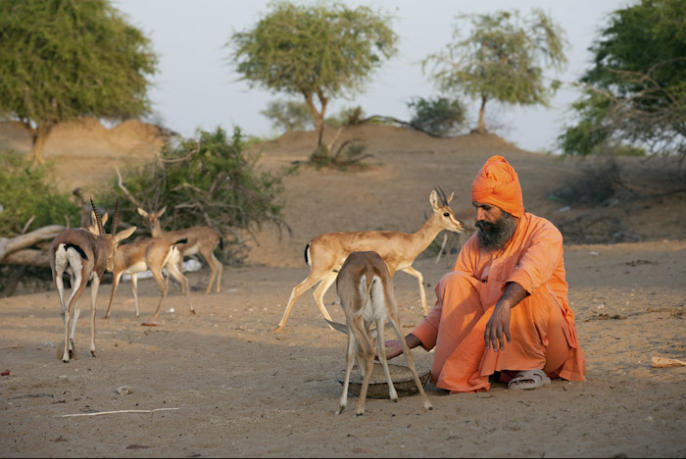
The Bishnois – here represented by a priest, always dressed in orange – have been feeding, every morning and every
evening, wild animals for over five centuries. Some deer are even hand-fed.
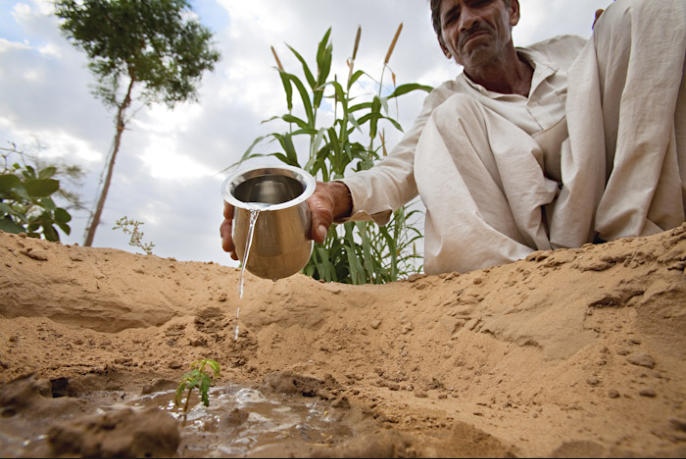
In the harsh desert, Hajari Ram plants a Khejari tree. From now on, he will share his own water with the tree for up to
two years. That’s about the time it needs to grow before it can be left alone.
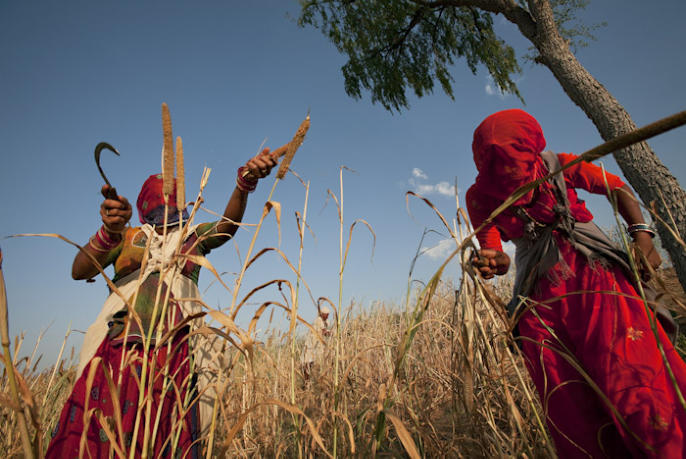
Near Lohawat village, married Bishnoi women harvest ripe millet by hand, dressed in colourful red saris and veils to
cover their head and face.
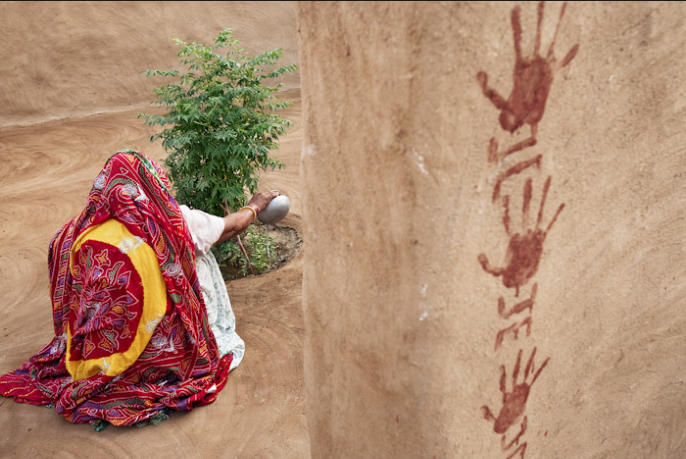
A woman waters a tree in her courtyard near Abohar in Punjab. The courtyard and the walls are covered with cow mud
and cleaned twice a day. The mud is refreshed twice a year.
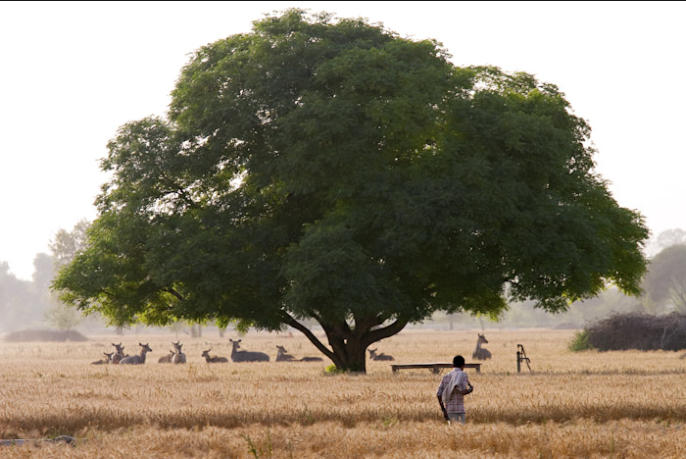
Bishnois allow deer onto their land for a snack. They share 10% of their harvest with wildlife, and consider deers and
trees to be members of their family and believe they deserve love and protection.
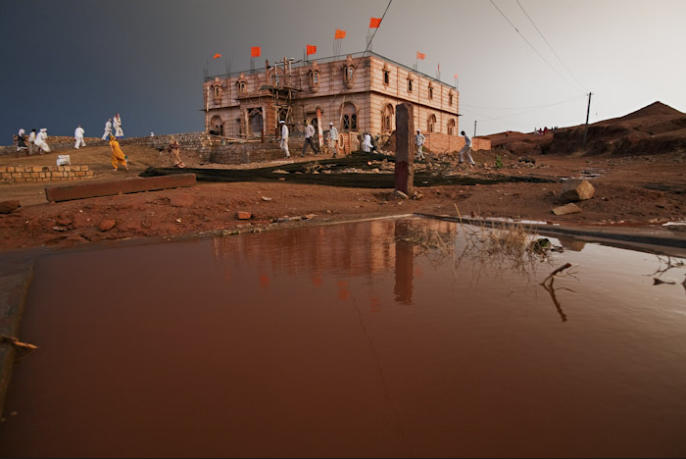
Still under construction, the new temple in Jamba welcomes, twice a year, up to 300 000 Bishnois. In April 2008, an
exceptional hailstorm put out the holy fire!
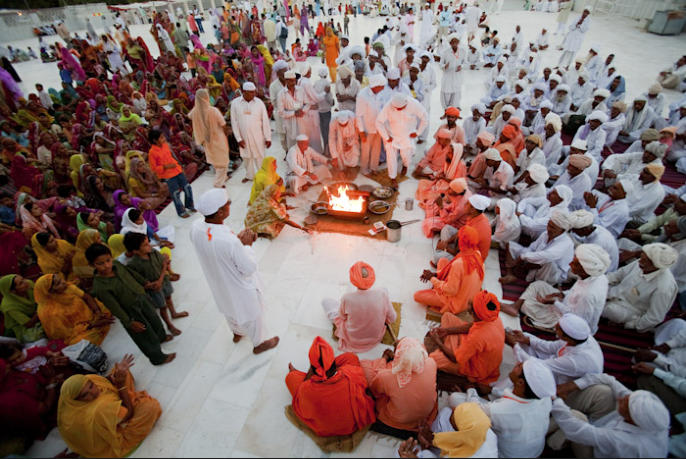
The night before Mukam festival begins, small havans (holy fires) are lit near the main marble temple, where their guru
died and was buried in 1536 AD.
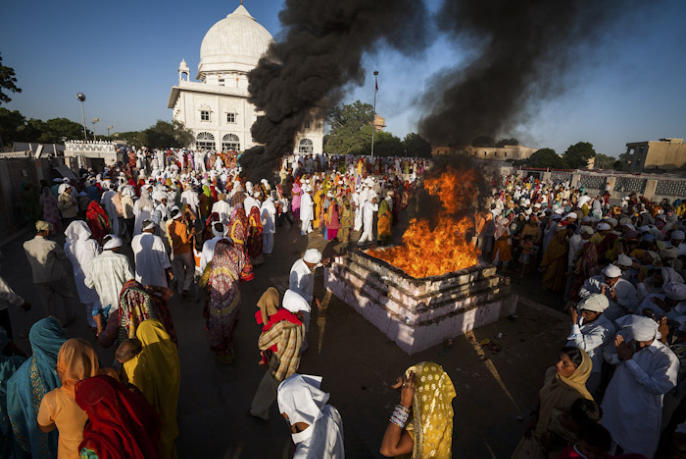
Twice a year Mukam becomes a place of worship and socio-religious gatherings. Up to 500 000 pilgrims come to the
place where their guru founded the community and died in 1536 AD.
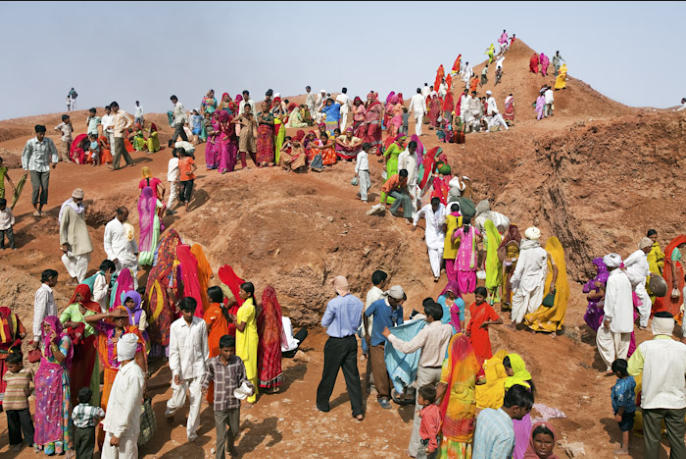
During Jamba festival, pilgrims take sand from the lower area to enlarge the pond and build huge sand dunes near the
temple as their guru told them: “build dunes to break the wind and save biodiversity.”
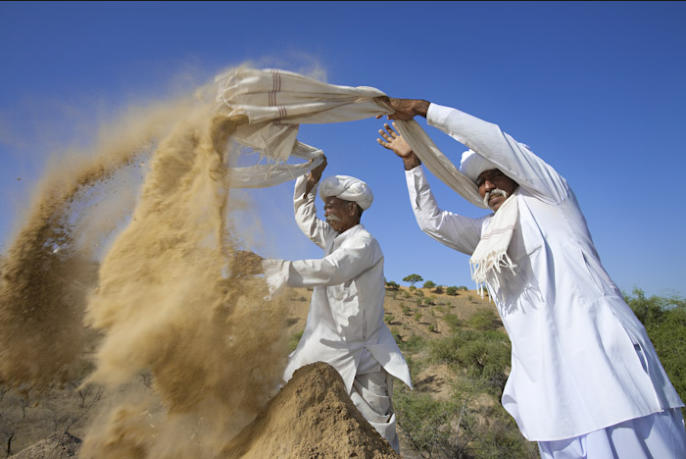
During Mukam festival, Bishnois take sand from the lower area and build huge dunes near the temple.
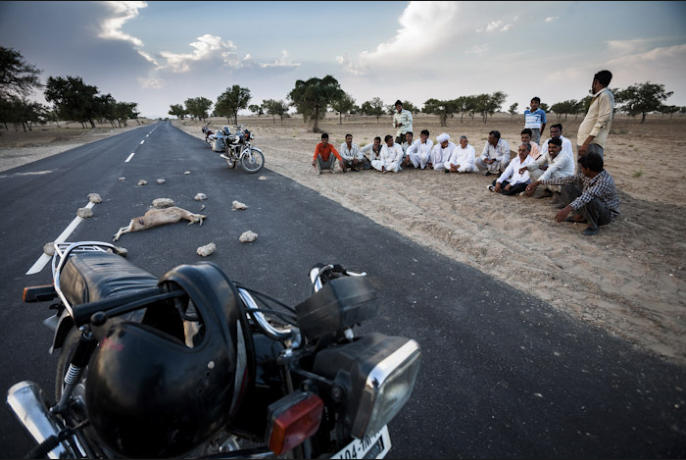
Bishnois waiting for the police near a dead gazelle, which was killed by a poachers. In Rajasthan, wild gazelles are
protected: 3 years in jail for a car accident, and more time for poaching.

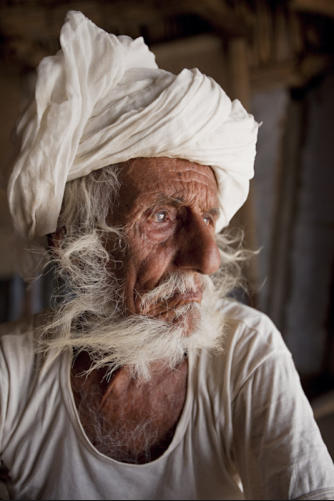
Fusha Ram Bishnoi is both sad and proud of his son
Ganga Ram, who was murdered while trying to save a
gazelle from poachers August 12, 2000.
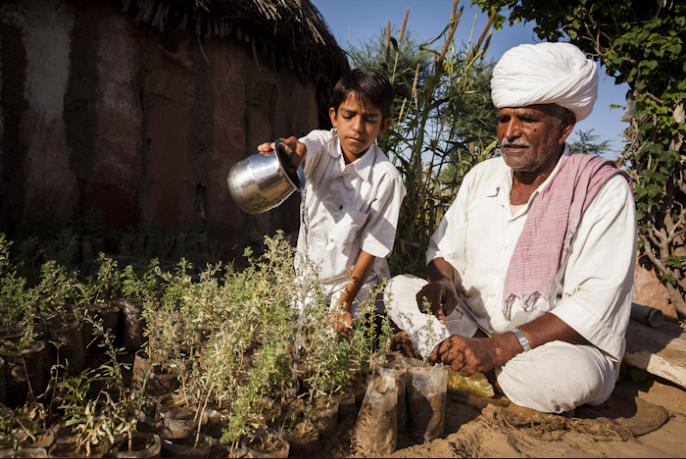
Rana Ram Bishnoi, who planted over 22 000 trees, teaches his grandson, Manish, how to take care of and water
young trees.
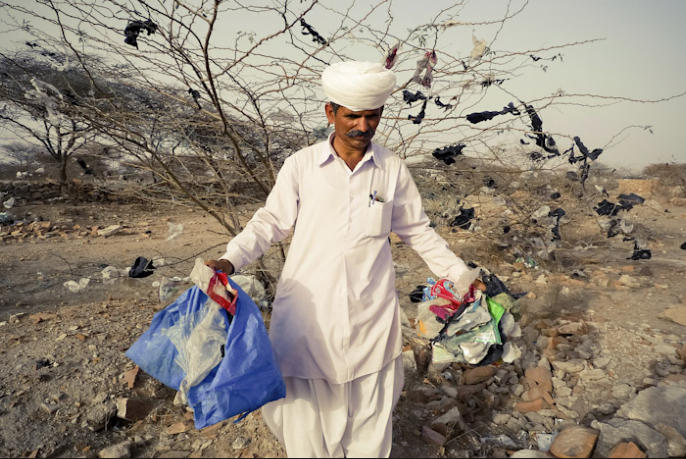
For many years, Khamu Ram Bishnoi has been fighting against the plastic bag pollution that affects the holy dunes at
Mukam, Bishnois’ place of birth. To honor the prophet, Bishnoi pilgrims build huge dunes near the temples, but for the
last 15 years they have used plastic bags, which are then thrown away once used. Invited to a sustainable
development forum in France, he discovered the Parisian public dustbin while visiting Paris with his friend, the
photographer Franck Vogel. He decided to bring the idea home and to build the first Bishnoi dustbin. Then he started a
long journey trying to convince his community that collecting plastic should be part of the 29 Bishnoi principles.
It was inside Jodhpur bazaar, during Franck Vogel’s film shooting “Rajasthan, the soul of a prophet” (2010), that Khamu
Ram supervised his first dustbin manufacturing, based on his sketches done in Parisian streets and Metro. A used jute
bag has replaced the plastic bag used for the Parisian dustbin. Khamu Ram also added a sticker explaining in Hindi
what a dustbin is for and how to use it.











